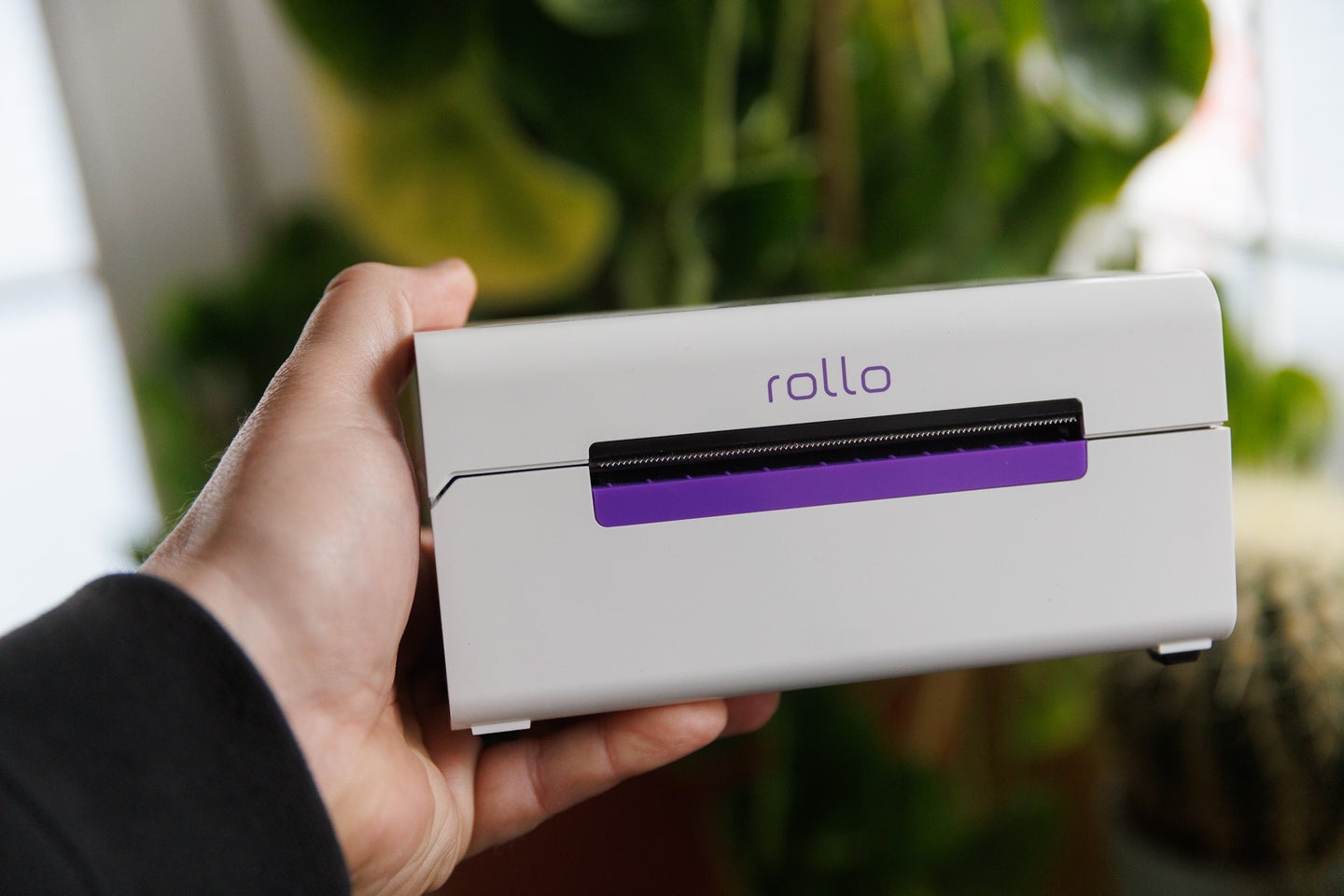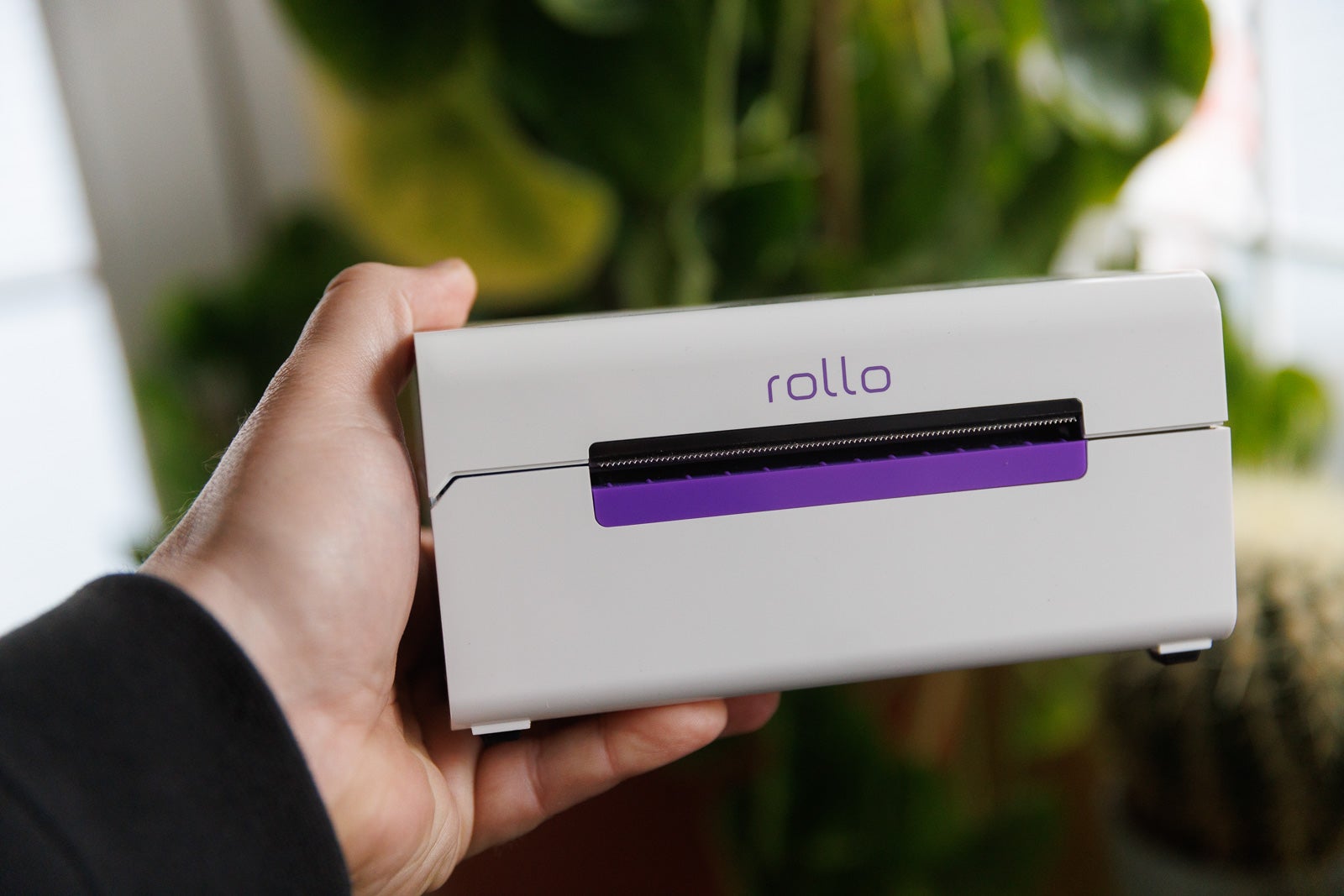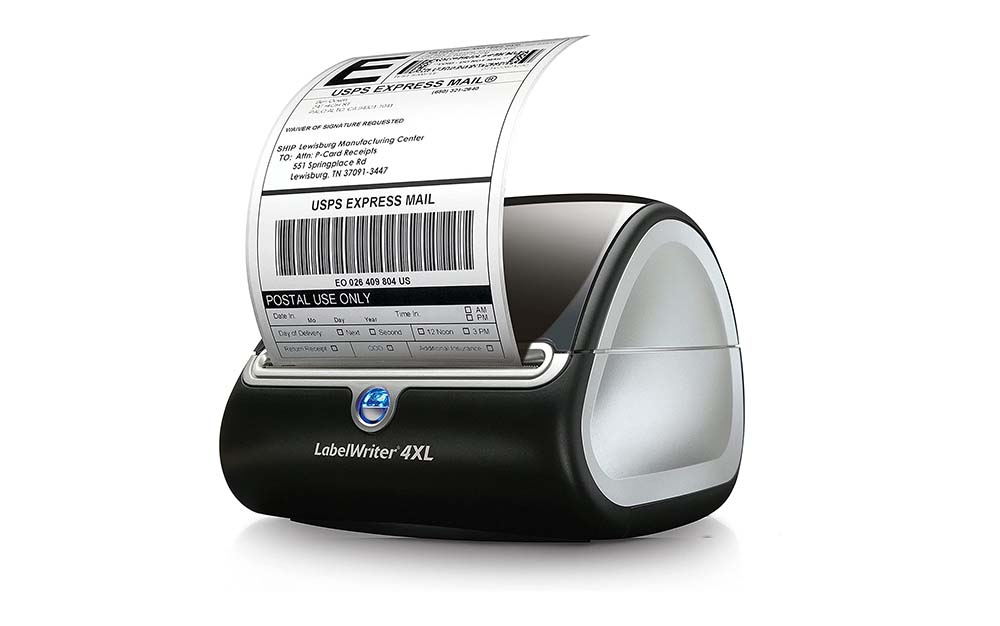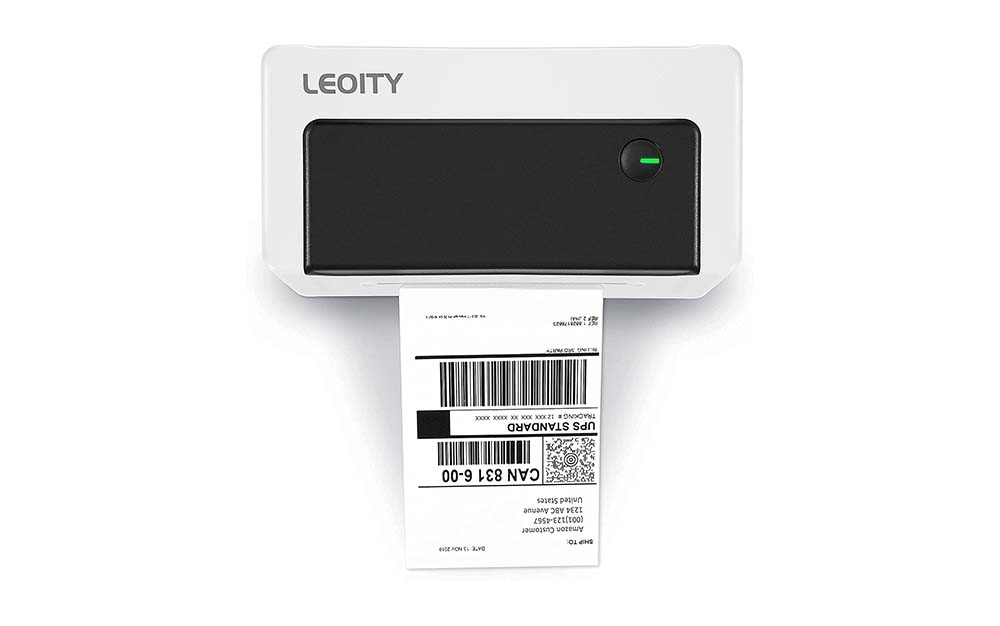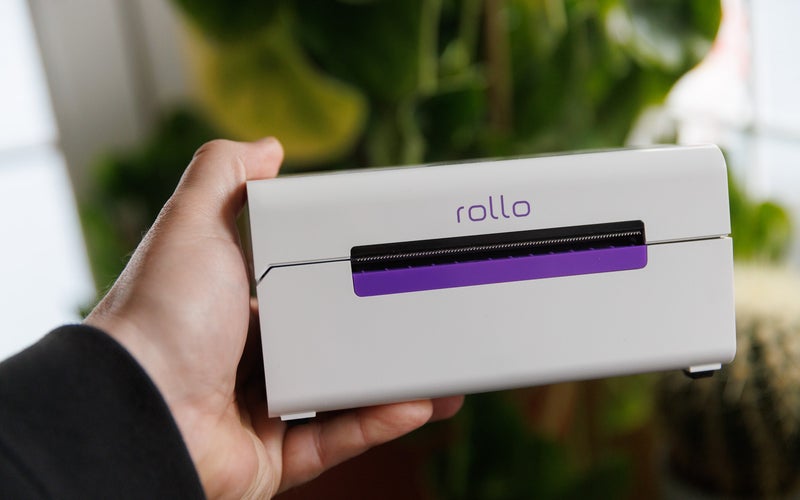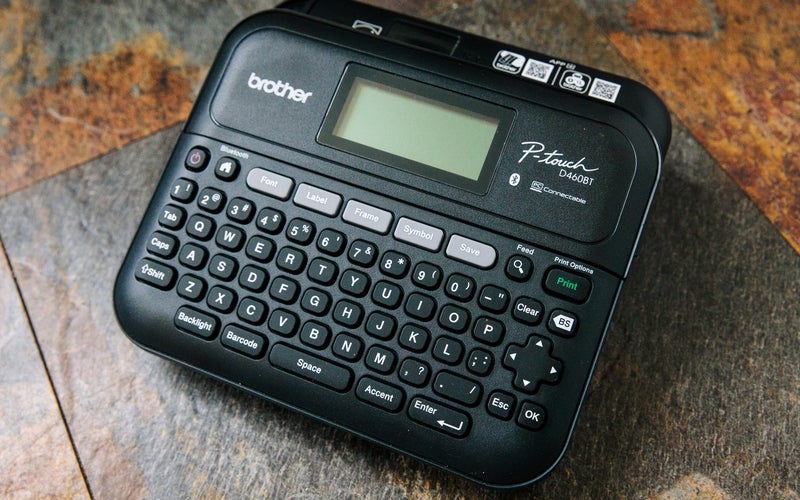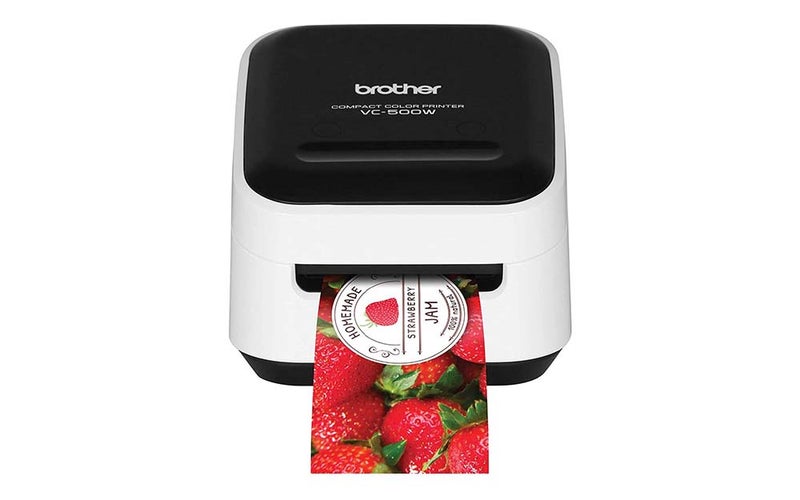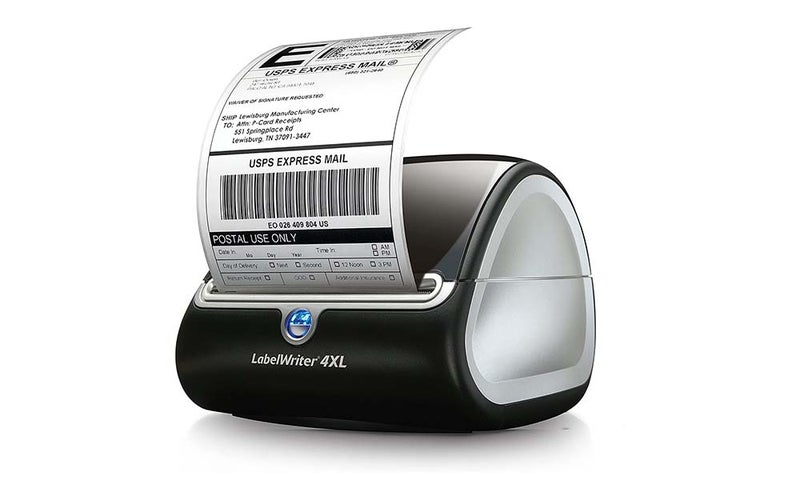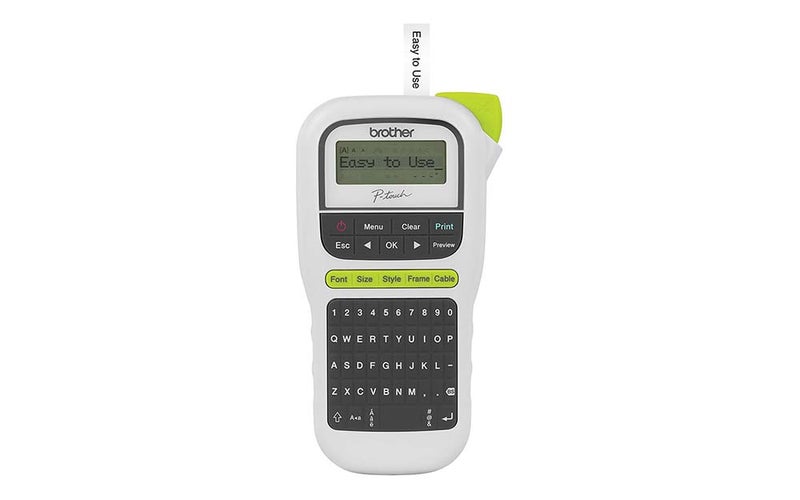We may earn revenue from the products available on this page and participate in affiliate programs. Learn more ›
You don’t have to be a true type-A person for a label printer to change the way you work. Whether you’re running a high-volume online store or just trying to keep track of where all your stuff is, a great label machine can make the process much simpler. The best label printers are typically much more efficient than trying to wrestle with an unreliable all-in-one inkjet printer that tries to do everything and succeeds at almost nothing. These purpose-built printers can make the shipping process a lot easier and a whole lot cheaper. Just be sure you know what you’re looking for before taking the plunge and picking up one of the best label printers.
- Best overall: Rollo Label Printer
- Best with wireless: Brother P-Touch PT-D460BT Business Expert Connected Label Maker
- Best color label printer: Brother VC-500W Versatile Compact Color Label and Photo Printer
- Best for small businesses: Dymo 4XL
- Best for organizing: Brother P-Touch
How we chose the best label printers
Here at PopSci HQ, we have gadgets and other products coming in and out all the time. I’m also a frequent online seller with an established vintage clothing business, so this is essential equipment for me. I can look at a shipping box and tell you the correct dimensions at this point. Our regular delivery service workers gave us a holiday gift last year. We do a lot of shipping. At the same time, we also do a lot of organizing. Keeping track of everything can be a grind if we’re constantly sorting through identical boxes. Label makers can make a huge difference.
The best label printers: Reviews & Recommendations
For this guide, we surveyed dozens of models but focused on the most reliable and revered brands with the best reputation. We considered ease of use and even design, which is important when you have to stare at these things all day.
Best overall: Rollo Wireless Label Printer
Stan Horaczek
Specs
- Thermal printing
- Up to 4-inch x 6-inch prints
- Works with all the major shipping companies
- Prints one label per second
Pros
- Fast
- No toner or ink to buy
- Works with all major shippiers
- Automatically recognizes labels
- Connects wirelessly
Cons
- Pricey unless you’re doing high-volume
- No color
Put a stack or roll of labels behind the Rollo label printer, and it can start pumping out ready-to-roll labels at a rate of one per second. It uses thermal-printing tech, which means it prints with heat onto thermal-compatible labels, which means there’s no ink or toner to buy as there would be with your inkjet.
The Rollo has built-in sensors that can automatically detect what type of label it’s printing on to keep everything in the correct spot without a user having to dig into its settings.
In many cases, you can get the Thermal Direct labels from the shippers for free, which means the cost of the printer and the small amount of electricity it takes to run it is all you’re spending on labels.
As the best label printer overall, it works with USPS, UPS, and FedEx, and the whole thing is rugged and portable, so you can take it with you if you want to get some work done at a separate location.
If you don’t need wireless capabilities, you can get the USB-only version for $199, though the wireless connectivity is extremely handy. Rollo also sells a scale specifically for online sellers in case you want the matching kit.
Best with wireless: Brother P-Touch PT-D460BT Business Expert Connected Label Maker
Stan Horaczek
Specs
- Memory holds up to 70 labels
- 30mm per second print speed
- Bluetooth or wired connectivity
- Five lines per label
- Manual tape cutter
Pros
- Easily stores frequently used labels for quick printing
- Crisp, clear print quality
- Keyboard is easy to type on
- Quick
- Screen is roomy and easy to red
- Wireless connectivity is handy
Cons
- Requires proprietary materials
This Bluetooth-enabled printer can churn out prints at up to 30mm per second on 0.75-inch wide tape. You’ll have to use the proprietary Brother tape, but that’s common for models like this. The P-Touch 460BT can store up to 70 different label templates in its memory, making them easy to quickly print if you use them frequently. Brother’s print quality and clarity are excellent. Even small print is simple to make out, thanks to the sharp, clear letters. You can connect this printer to a computer via Bluetooth or a cord, which makes it one of the most versatile models we’ve tried. It’s a great way to label things in storage or add QR codes to inventory that you’re trying to keep track of in automated systems. Plus, if you’re using it at home, you have many formatting options that are easily accessible through the keyboard. With 16 different fonts, 800 symbols, and 140 frame styles, you can personalize the look of the labels. If you’re looking for a traditional model, go check out our list of the best Bluetooth printers.
Best color label printer: Brother VC-500W Versatile Compact Color Label and Photo Printer
Brother
Specs
- ZINK thermal printing technology
- Prints in color and black-and-white
- WiFi connectivity
Pros
- Full-color printing without ink to buy
- Can make prints up to 17 inches long
- Small
- Wireless connectivity
- Lots of printing substrate options, including stickers
Cons
- Width maxes out at two inches
- Pricey paper refills
This printer can churn out full-color print jobs but doesn’t require ink. Instead, it relies on Zero Ink technology (sometimes called ZINK). The required colors exist inside the special paper or sticker refills before entering the printer. Heat activates them to create images.
These labels aren’t as big as typical shipping labels—they max out at two inches wide. It can print images up to 17 inches long, however.
Built-in wireless connectivity makes connecting via WiFi or even a smartphone’s wireless connection easy. While this isn’t ideal for people in most business settings, it can be the best color label printer for a teacher or other professional that can benefit from the occasional splash of color.
Best for small businesses: Dymo 4XL
Dymo
Specs
- Prints up to 4 inches by 6 inches
- 60 custom templates to choose from
- Prints up to 129 labels per minute
- Works with major selling and shipping platforms
Pros
- Super-fast printing
- Very small footprint
- Super crisp, high-res text
- Woks with shipping labels from major companies
Cons
- Expensive
- Works best with on-brand labels
Small business label printing goes beyond shipping. This 300-dpi printer can churn out super-crisp barcodes, QR codes, and other business-specific labels easily read with a machine or your eyeballs. If you’re mostly shipping, this printer works with labels from major shippers like FedEx, USPS, and UPS. With 60 built-in printing templates, the Dymo can automatically print labels from popular services like eBay and Etsy to streamline shipping.
Like other label printers, it maxes out at four inches by six inches, which should be plenty big for the most common tasks. Dymo offers a litany of different first-party papers and substrates to match your exact printing requirements.
Like other thermal printers, it doesn’t require ink or toner cartridge replacements, which keeps costs way down over inkjets making this the best label printer for small businesses. If you’re looking for the best printer for small businesses over all, go check out our buying guide.
Best for organizing: Brother P-Touch
Brother
Specs
- Full QWERTY keyboard
- Battery powered
- Prints to half-inch tape
- Three font choices
Pros
- Cheap
- Built-in keyboard
- Portable
- Prints quickly
Cons
- Very small print material
If you don’t need to print barcodes or shipping labels and just need the best label printer for organizing, this portable unit can come in very handy. Load a roll of half-inch tape inside and choose one of three fonts. Then type into the onboard QWERTY keyboard, and the machine spits out your label in just a few seconds. It allows for borders and special characters like fire if you want to point out that something is flammable.
This model can save 15 labels to its built-in memory, so if you’re constantly making the same one, you don’t have to create it every time you turn the machine on. Brother sells a whole line of compatible tape for printing, including various colors and types. The printing process is quick and quiet so that you can make fast work of an entire room or space. The best small printers can make a big difference in your workflow.
Things to consider when buying the best label printers
Paper size
The major shipping companies have standardized their label sizes, so it’s fairly easy to know whether the labels you need to use will fit. Anything capable of pumping out 4-inch by 6-inch labels is enough to cover USP, USPS, FedEx, and any other big names.
Smaller label makers and quirky label printers often use much smaller material, which won’t work for shipping purposes.
Printing technology
Most shipping label printers use True Thermal technology. There’s no ink involved. Instead, the printer uses heat to reveal black substrate from behind a top white layer. This process requires special paper or labels to work, but it doesn’t require ink cartridges or toner, which is typically much more expensive.
If you want color, you’re better off with inkjet or Zero Ink (ZINK), which uses the same thermal printing tech but includes color in the paper.
Print speed
You’ll sometimes see this expressed differently depending on the model. Some thermal printers will describe their speed by the number of mm per second it can churn out. For instance, you might see 150mm/s listed in a product description. Higher numbers mean faster printing. Other printers will tell you exactly how many labels you can print out per second or per minute. Expect 0.5 to 2 labels per second, depending on the content and the printer.
FAQs
Q: Do label printers need ink?
Thermal printers like the Dymo don’t rely on ink to make prints. Instead, they utilize special paper or labels that react with heat to reveal black material that makes up the print itself. So, there are no ink cartridges or toner cartridges to replace.
If you’re using a more traditional printer to print labels, however, you will need to replace those cartridges.
Q: What should I look for in a label printer?
As with any electronic, I suggest figuring out what the most important aspect of the device is to you and focusing on that. In the case of label printers, speed is likely a concern if you’re dealing with high volume. You want something that can churn out a lot of labels in a little bit of time.
Size is also a consideration. If you only need labels to mark bins, boxes, binders, or other things that need organizing, pick something that gives you more text options and a portable form factor.
Q: How long do label makers last?
Heat and gadgets do not typically get along. Most label makers use heat for their thermal printing process. Good models have robust cooling solutions that blow hot air out to keep delicate electronics from overheating. Still, you’ll know your label printer is starting to go when prints get inconsistent and spotty.
Final thoughts on the best label printers
- Best overall: Rollo Label Printer
- Best with wireless: Brother P-Touch PT-D460BT Business Expert Connected Label Maker
- Best color label printer: Brother VC-500W Versatile Compact Color Label and Photo Printer
- Best for small businesses: Dymo 4XL
- Best for organizing: Brother P-Touch
Shipping is a huge part of starting many small businesses; the best label printers can make short work of it. Of course, they also have utility beyond shipping. They can print barcodes, stickers, and other things to make your life easier and more organized. Just make sure you get the right model for you.
Why trust us
Popular Science started writing about technology more than 150 years ago. There was no such thing as “gadget writing” when we published our first issue in 1872, but if there was, our mission to demystify the world of innovation for everyday readers means we would have been all over it. Here in the present, PopSci is fully committed to helping readers navigate the increasingly intimidating array of devices on the market right now.
Our writers and editors have combined decades of experience covering and reviewing consumer electronics. We each have our own obsessive specialties—from high-end audio to video games to cameras and beyond—but when we’re reviewing devices outside of our immediate wheelhouses, we do our best to seek out trustworthy voices and opinions to help guide people to the very best recommendations. We know we don’t know everything, but we’re excited to live through the analysis paralysis that internet shopping can spur so readers don’t have to.
